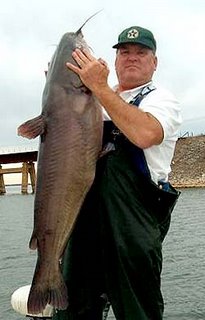Aspiring Pro Mike Diehl sent in the following tips on how to winterize your boat:
1. Fill your gas tank(s) and add gas stabilizer. (Follow the instructions on the stabilizer bottle as far as quantity. If in doubt, more is better.)**Most manufacturers will advise to store the tanks full to ensure that there’s no condensation. Some of the smaller motors can have their fuel lines disconnected and run dry; this doesn’t eliminate all gas from the motor and can lead to gummed up carbs, etc., come Spring. Having stabilized gas throughout the motor ensures that gaskets don’t dry out and there’s no chance of the gas turning to varnish.
2. Run the motor for 10-15 minutes to ensure that stabilized gas is in all of the lines, carbs, etc. (I take mine for a run after stabilizing the gas; I want to make sure that I’ve used up all of the un-stabilized gas that was in the fuel line, etc., and that only stabilized gas is in the system.)
3. Before shutting the motor off, you will want to fog the engine by spraying a fogging oil (storage seal) into all of the carbs (or the EFI system).
**Check your owner’s manual for specific instructions on how to fog your particular engine. (Some of the newer engines are not to be fogged.) Follow the instructions on the can; you will want to have the motor smoking “big time”, this ensures that you have the engine properly fogged.
**Fogging oil puts a coating of oil on all of the cylinder walls and throughout the engine; it prevents rust from occuring during the winter storage months.
4. Remove the spark plugs and spray fogging oil into each of the plug holes. (About a 3-4 second spray in each.) Replace the spark plugs and disconnect your kill switch. Turn the motor over 3-4 times to distribute the oil into the cylinders.
**Not everyone does this step, but I figure that it’s extra insurance that the entire engine is well fogged. After the first run in the Spring you might want to consider putting in new spark plugs, don’t put in new ones in the Fall, they will just get “messed up” with the fogging oil.
5. Remove the prop and check for fishing line behind it. Grease the shaft and replace the prop.
**If you have any nicks or dings on the prop you might want to have it repaired during the winter when the “prop guys” aren’t too busy, rather than waiting until Spring.
6. Change the lower unit lube, (or at least check to ensure that there is no water present in the oil to ensure that it can’t freeze during the winter. If there’s water in the oil, it will be at the bottom and will come out first, or the lube will be a milky color which indicates water present.
7. Grease all fittings and lubricate all points shown in your owner’s manual.
8. Fill the oil tank(s) to the top to prevent condensation during the winter.
9. Remove all batteries and store them inside. Charge them about every 6 weeks or so to keep them “topped up”.
**You might want take the wires from each battery and put a cable tie (or piece of wire) through them to keep them in “sets” so that you know which ones go where come Spring. Label them as well, if need be.
10. Check to ensure that you don’t have any water in your livewells, bilge pumps, etc. If in doubt you might want to add some RV antifreeze to them.
11. To make sure that the water in your water pressure line doesn’t freeze during the winter and damage your gauge, you might want to disconnect the line and drain the water out.
12. Check your trailer tires to ensure that they are at the maximum tire pressure (probably 50#). Depending on where you store your trailer you might want to consider putting the trailer on blocks to keep it from sitting on the tires all winter.
13. Check the trailer hubs to see if they need grease added.
14. You might want to prop all of your compartments open slightly with pieces of styrofoam (or something similar), to ensure that air can circulate everywhere to prevent any condensation.
15. Remove basically everything from the boat.
16. Make sure that you store your motor in the “down” position to ensure that all water has drained out.
17. Wash the boat,and put a coat of wax on it (and the motor), if it needs it.
That’s it……….you’re done!!
Editor’s Note: Wheu! Thanks Mike. I’m sweaty and tired just thinking about it! Maybe I’ll just keep fishing through the winter and just wear heavier clothing.





